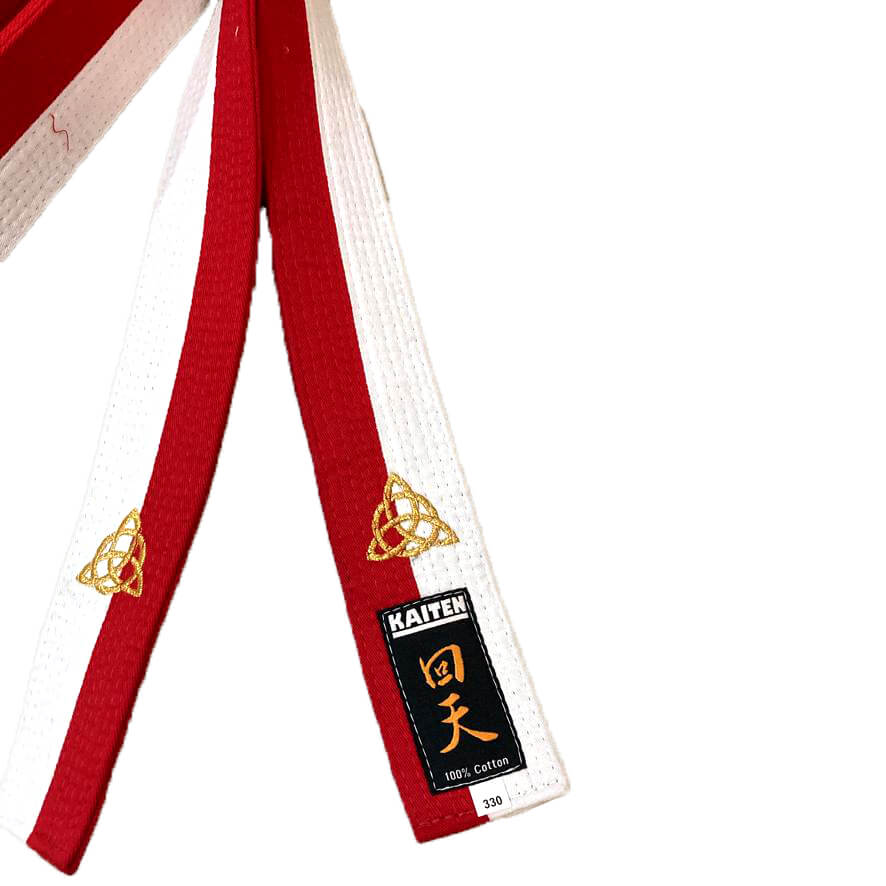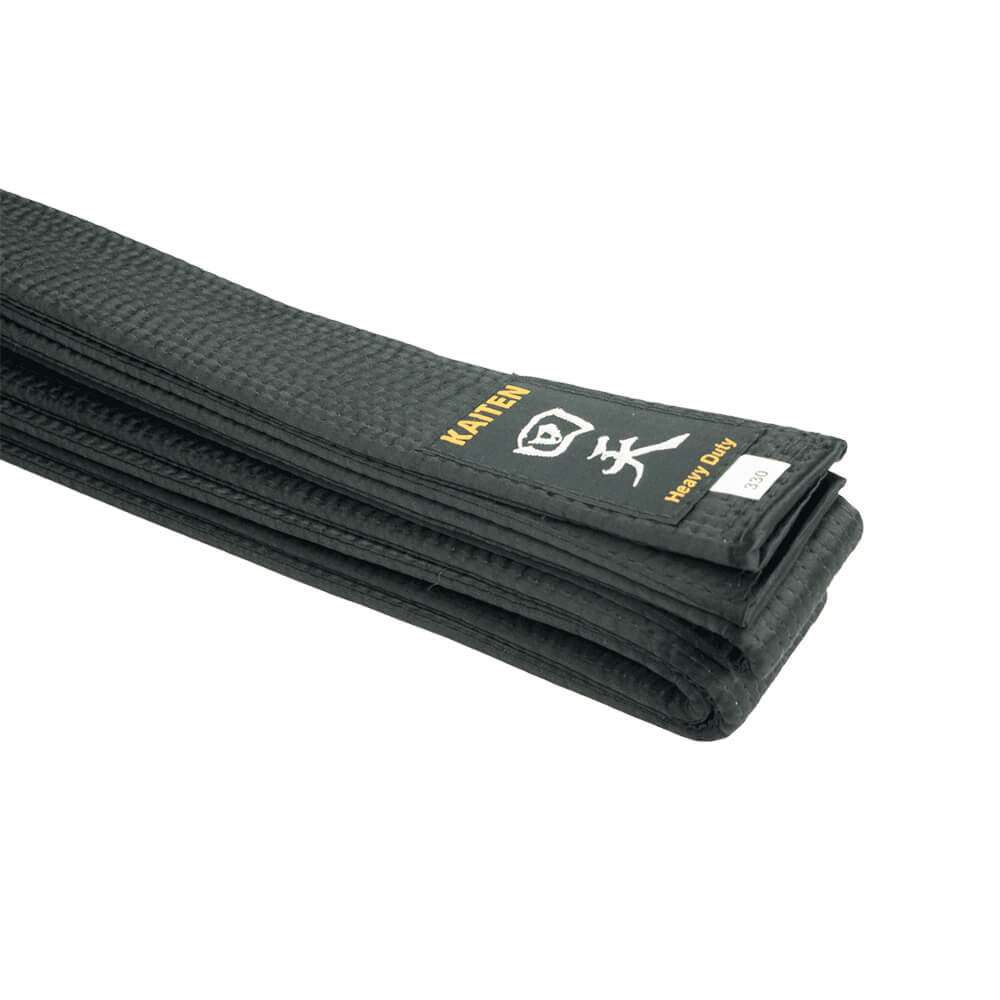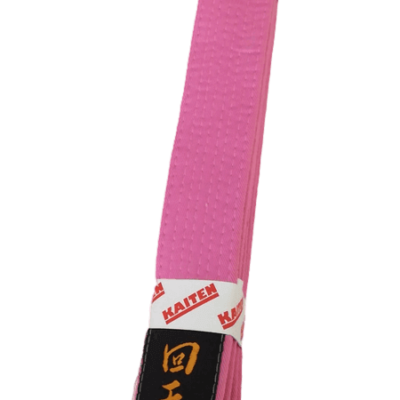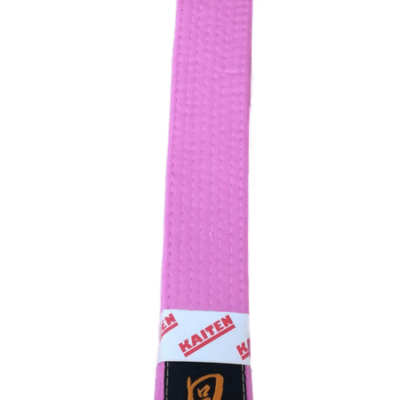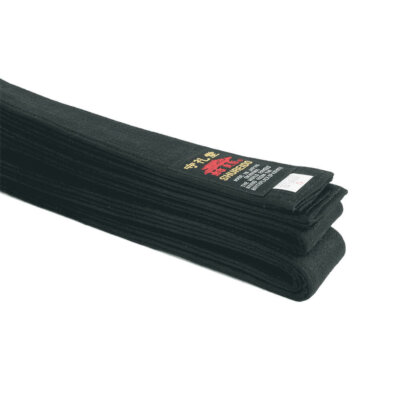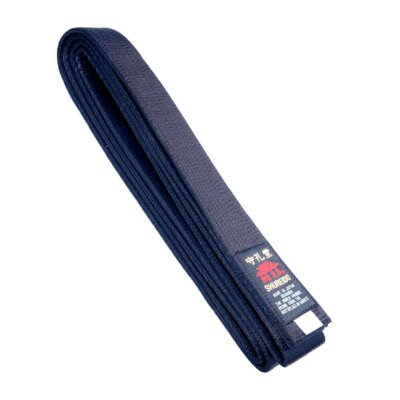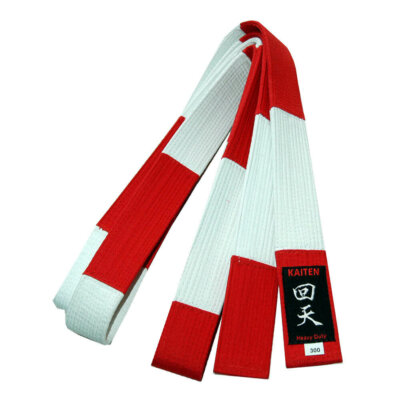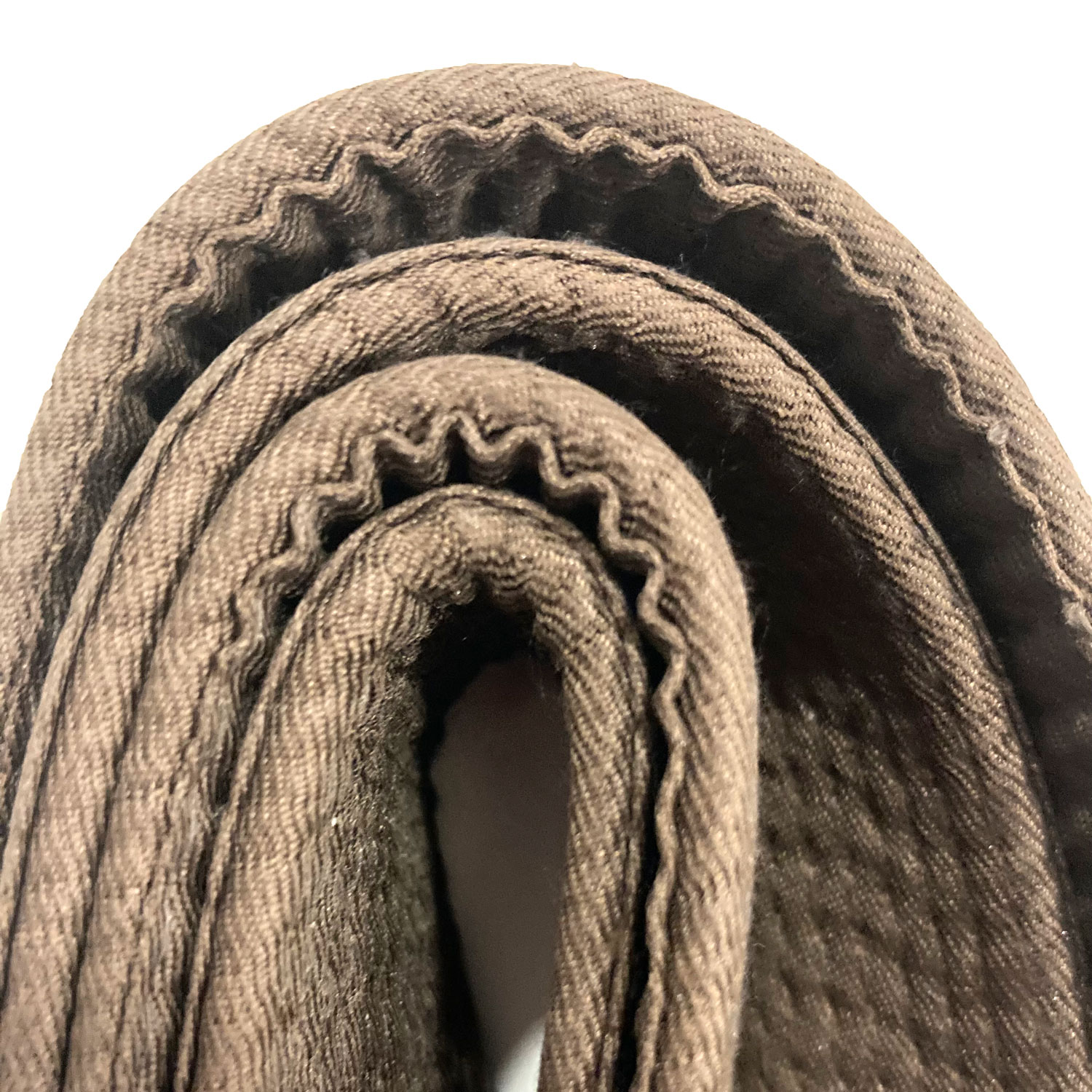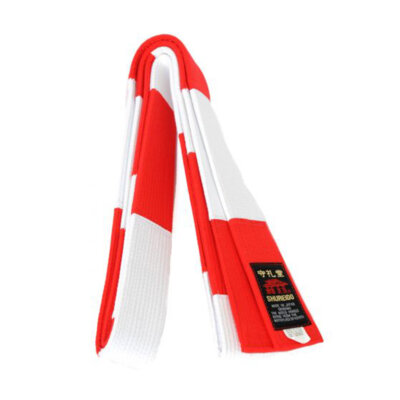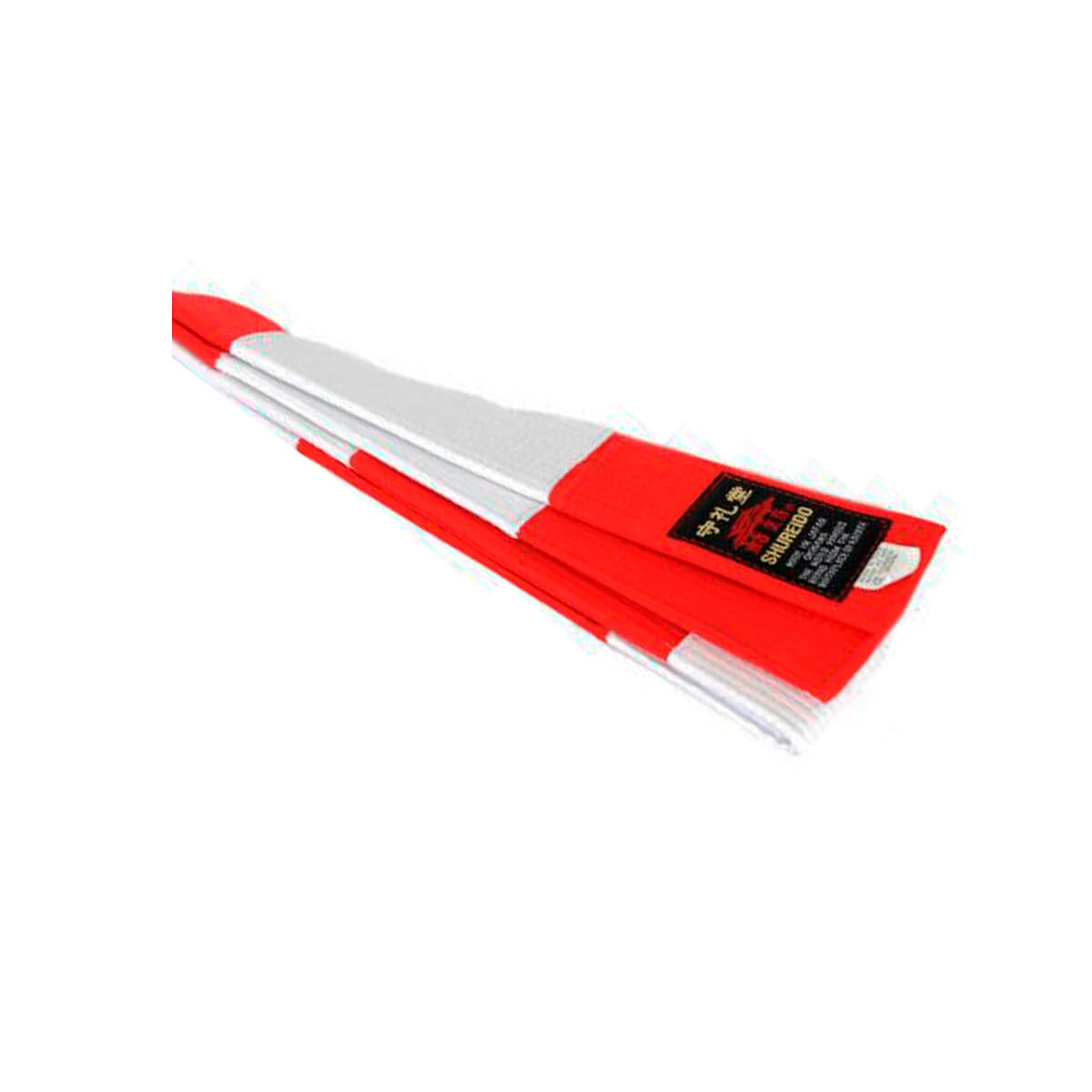Customize your karate belt
At Hajime Karate we are specialists in embroidered belts. The karate black belt is the first step on the karateka path. Once he has left behind the kyu or degree belts, the colored belts, he really begins his path towards himself or herself in the world of Karate. For this reason, a step as important as this, we attend to Hajime with special care and affection. For us, each of these embroidered black belts signifies the constancy, dedication and passion of each of the people behind. They are works of art that we take maximum care of because they come fully customized to the karateka’s taste.
Japanese calligraphy specialists
We are the only company dedicated to the world of Karate that has Japanese personnel in its ranks, specialized in Japanese calligraphy.
Your belt, step by step
We are going to explain how the process is, both for manufacturing and for choosing the best embroidered belt, so that it fits exactly what you are looking for. We also leave you a link to guide you throughout the process and that you can choose step by step what you like most.
Choose your belt brand
To begin, we must decide which brand we are going to choose for our embroidered belt. At Hajime Karate we offer you two of the most traditional and prestigious brands specialized exclusively in Karate:
- Kaiten: German brand that offers its belts in three qualities and at a very affordable price. The quality / price ratio of these belts is very high. The font they use to embroider the belts is different from Shureido, the kanjis are less thick.
- Shureido: Japanese brand par excellence that continues to manufacture and embroider its belts by hand in a traditional way on the island of Okinawa. A leap to excellence. A Shureido belt symbolizes and identifies you with the brand’s own values: respect for tradition, art, humility, perfection at work, not settling or giving up until the product is perfect. Its price is higher than that of Kaiten, but a Shureido belt embroidered on the island of Okinawa is a unique piece.
Karate Belt Fabrics
Once we have a clear brand, we will have to decide what type of fabric we want for our belt:
- Cotton:We are talking about the same fabric that we have already used in colored belts. The thickness of the belt changes because the padding of a higher quality black belt is greater, but we are talking about the same fabric. It is a resistant belt, that does not shine, but the fabric is like matte, it lasts much longer, it is more resistant and it takes a long time to peel and turn white. It is very easy to tie the knot and to hold it, you hardly need to tame the belt. It is more or less what we are already used to from color to color.
- Silk-satin:It is an imitation of natural silk, but it shines a little more and slips a little less than the original. The belt padding is still cotton but the lining is silk-satin. We are talking about a belt that is more delicate since as soon as it rubs, for example when carrying it in a backpack or working with it on, it tends to peel more easily. They are those belts that at the same time the satin silk peels off and the white cotton interior lightens, which is what gives the belt consistency.
- Natural silk: One of the few brands that the natural silk black belt works is Kaiten. This is due to the fact that natural silk is a difficult material to obtain and very high in price. In fact, we can understand it by thinking that it is not the same to make a mistake in an embroidery or that a stitch is caught in a cotton belt than in a natural silk one. The label of this belt that borders on excellence is also special and the belt itself is accompanied by a very resistant and elegant luxury box to store the belt and to remain in perfect condition for much longer.
Karate belt measurements
The measurement of the karate belt is essential so that it fits us exactly as we want. The one we can choose for our embroidered belt depends, above all, on the type of embroidery that we are going to choose.
Then we will explain what types of embroidery are available. But we are going to define what measures we can choose and some particularities that we must take into account:
-
- The standard measurement for a belt of normal thickness in adults or adolescents is size 5 / 290cm. But we can choose the one we prefer from ten by ten centimeters.
- If we choose a belt of special thickness, this means that the knot will go up more, so it would be convenient to choose 10 centimeters more, which will be about 5 cm for each end. The belt is thicker, therefore the knot takes up more space on the belt and the ends tend upwards.
- Then we must take into account what we are going to embroider, to know what space we have between the end of the belt and the knot. If you have any questions, it is better that you contact us and we will advise you. If it is a short name or style embroidery, about 6 or 7 letters is fine; but if we are talking about something with more than 8 letters, it is better to make sure because the embroidery may remain in the part of the knot, so that a part would not be appreciated.
- If we choose factory embroidery, we can choose the size we want from ten centimeters to ten centimeters. That is, they always end in 0. For example, 270 or 310 or 350cm, etc …
- If we choose embroidery in Europe, we will have to adjust to what is in stock. That is, in the Kaiten brand we can choose a black belt embroidered in 250, 275, 300, 325 or 350cm. If we choose a Shureido belt, we can choose any measure between 270 and 350cm of ten by ten centimeters.
How to embroider your karate belt
Now is the time to choose our embroidery. First we have to decide if we want the embroidery letters to go through the belt or the stitching to go over it. We explain the difference:
- Factory embroidered black belts: This means that the belt is personalized with great detail and made by hand exclusively for you. The handmade embroidered belt procedure is simple but very laborious, so you have to wait a while to get it perfectly finished and at the best price. First they embroider the fabric of the belt with all the details you have requested: the type of embroidery, the language, the chosen color … Then they include the cotton filling you have selected and assemble it by sewing it, so that the belt is finished perfect and without the embroidery stitches showing from behind. The back of the belt is completely clean and on the front you can see the embroidery with the stitching of the black belt thread crossing over it. It is the preferred option for most karateka. Keep in mind that we are talking about a personalized item, which is custom made and normally takes about 3 months. We say normally because sometimes it takes two and other times, on the other hand, almost 4. We have to bear in mind that they are handmade items and that, in addition, we find ourselves in special circumstances. You have to be patient but it is worth the wait because the belt is a true work of art made for you. The kanji that Shureido embroiders on the belts are much thicker.
- Black belts embroidered in Europe with Japanese machines: This option is in high demand for gifts, special dates or exams. And it is so because we can embroider any Shureido or Kaiten belt with this option. The belt is already made, we have it in our warehouse, with which it is already finished. Then it is embroidered directly in Germany, with Japanese machines so that the result is also highly appreciated by our customers. Here we talk about a fundamental difference: the speed, because in about 15-20 days you have the embroidered belt at home; and that the embroidery is different, the finest kanji. As the belt is already made, the embroidery is done over the belt stitching but we offer the customer the possibility of covering the embroidery with black thread from behind so that it is concealed and looks much better, with which the result is very satisfactory. .
What thickness of karate belt to choose
Once we have this decided, we will see which belt thickness is the most appropriate for what we are looking for:
- Black Belt Embroidered Top Quality Standard Thickness: These are black belts that are about 4.2cm wide. Those of Kaiten have 8 seams and those of Shureido with 11. It must always be taken into account that they are handmade belts and, therefore, may differ one or two millimeters from what we indicate here. The standard thickness belt has a cotton lining that is ideally thick. It can be tied and the knot remains without having to have it done before. It is easy to get hold of it. It tends downwards because, for example, a black Shureido belt weighs around 250-300gr .; a Kaiten between 200 and 250gr.
- Black belt embroidered special thickness: This belt has a double thickness cotton interior which makes it more difficult to tie the knot. Once you have tied it, the ends tend upwards since it has more body. We do not recommend washing the belts, but we can say that there are customers who soak them for a day so that they lose their rigidity and even leave the knot tied for several days to be able to get hold of the belt. In special thickness we can find in Hajime satin or cotton silk belts. We recommend cotton fabric for this thickness, unless you have a lot of experience and then the satin silk is very beautiful, although there are karatekas who do not like it because they spend the class tying the knot since silk tends to slip and if it is thicker on top and the knot is not perfectly done, we will find ourselves faced with a nuisance. This belt also has 11 seams for Shureido and 8 for Kaiten; wide about 4.6cm. In the case of Shureido, in special thickness, we can always choose the width of the belt on request: 3.5, 4, 4.6 or 5cm. The belt that customers demand the most is the 4.5cm belt, which is the one in stock regularly.
What to embroider on your karate belt
Now we go with what we are going to embroider and how we are going to do it. First of all, the Japanese typefaces used in Germany or Japan for embroidery are different. Kanji or katakana in Japan are thicker and more rounded, while embroidery in Germany has the thinnest line.
We can find several types of embroidery:
- Uppercase Latin letters: one letter is embroidered under the other. Points or accents can be added. For example: JOSÉ or JUAN V.
- Latin cursive letters “Script”: It is embroidered from top to bottom, that is, the last letter of the text is the one that would be closest to the label. The text appears as lying down because it is embroidered like calligraphy writing, the linked letters. Accents, initials and periods are also allowed here.
- Kanji: Japanese writing can be in kanji, katakana, or hiragana. We use kanji to express concepts. Therefore, sometimes, the same kanji can represent several things or, also, the same word can be represented in several kanji according to its meaning. For example, let’s imagine that I want to embroider the kanji for “road”. But there are several kanji for this: Karate path, stone path, life path, what path, what do you mean? Therefore, when a client wants to embroider something in kanji that is not a Karate style, which is already defined, Keiko, our Japanese specialist, contacts the client to give him the best and most precise answer according to what he wants. wants to express the customer. This is essential when embroidering and capturing what the customer wants to collect on his belt.
- Katakana: we are talking about Japanese writing that we translate phonetically. That is, they are sounds that we are expressing in Japanese letters. It is the way to translate our proper names into Japanese letters. For example, write ROSA MARÍA in Japanese. Therefore, when translating through syllables, we cannot translate single letters as an initial into Japanese. In that case, we recommend either eliminating it or converting it to uppercase Latin letters or developing the initial in the full name.
Here, in addition, we have to decide what we are going to place on each tip. The most common is to embroider the style on the tip of the tag and the name on the empty tip. Pero es cierto que cada estilo, y cada karateka, tiene unas preferencias con lo que, a veces, suelen invertir esta tendencia y bordar el nombre en la punta de la etiqueta. This happens when they are very short names and the style is very long. Other times, they ask to embroider it lower to take advantage of the free space because what they are going to embroider is very long; There are even people who do not embroider the name but the values of Karate, known phrases, various names, etc … Anything is possible in Hajime.
What we have to take into account, in addition, are several things:
- Many times, clients want to have their first and last names embroidered, for example. Depending on the length of the belt and the length of its name, we must bear in mind that we must look for other solutions. For example, let’s imagine we have a size 4 or 5 belt where we want to embroider JUAN LUIS CONERCIAGA in Latin or Japanese letters. It will occupy at least 20cm but the space we have from the tip to the knot is 15cm, so the embroidery is going to get into the knot. So, when we see these details, we talk to the client to make sure they have enough space and it is someone who likes a very long belt so they have enough space or we advise other options such as embroidering only the compound name or a name and surname, for example.
In any case, everything is supervised to the smallest detail by our team of embroidery specialists with Japanese staff. In addition, being a phonetic transcription, sometimes we even work with audio files to be sure of how it is pronounced and that what is read on the belt is exactly what the client wants to put. The accuracy and rigor in this type of thing characterizes us.
Colors and types of embroidery thread
COLORS (METALLIC THREAD): And in what color could I embroider my belt? Well, the answer will depend on the personal taste of each one. Before, the color par excellence, which is the classic orange-yellow Shureido, prevailed and there were always some customers who chose white or silver, red or yellow. But today, embroidered belts come in all colors whether for a boy or a girl, for someone older or younger. From the range of green, purple, blue or pink. Everything is valid and everything is beautiful on black.
When ordering, for example a factory embroidered belt, the metallic thread can be ordered. We are talking about a thread that is not exactly cotton but is covered with a golden or silver metallic coating that makes it very delicate. It is very difficult to embroider with this thread and any loose stitches will have to discard that belt.
This thread is of the highest quality and the belts are embroidered with gold and silver metallic thread. If the thread is metallic or silver , it is advisable to store it in a presentationbox or take special care with it , especially as it is a very delicate fibre that can break. because it is a very delicate fibre that can break when rubbed against the sports bag during transport.the sports bag during transport. may break due to friction in the sports bag during transport, etc. This type of embroidery on a special thickness black Shureido belt is the most demanded for gifts along with the gift box since it is a belt with an unequaled quality handmade on the island of Okinawa.
LABELS: As we show in the photographs that accompany each belt, we see the labels that we can choose and if the one of the style we practice is available. Each brand has a series of agreements with the Masters who are the representative head of that same style. Thus, for example, we find that in the Shureido brand we can choose the label of Wado Ryu, Goju Ryu from the branch of Higaonna, Shito Kai, etc. When we order any Shureido belt or karategui we can request to change the generic Shureido label for the one specific to our style.
While Kaiten offers us the possibility of personalizing belts and karateguis with the label of our Club, Association or style. Many clubs decide to take this path since it gives them their own identity, more of a group, and identifies them with their organization. All Club members, just as the club logo is embroidered on the chest, receive the degree belt with the club’s own label. Thus, the teacher also gives added value to what he delivers to each student.
Finally, we get to Dan’s bars. At this point we give several options: embroider the bar by turning the belt or just from the front. In addition, the client can request a different color for them as is common in styles such as Kyokushinkai.
It is convenient to remember that, as specialists in embroidered belts, we always advise you to contact us if you have any special requests or add comments on the web to anything you would like to embroider because every day we receive requests from clients that we attend , we listen and work with them to make your embroidered belt a unique piece that meets all your expectations and beyond. We have embroidered many different and very special things for styles or branches of Martial Arts such as Kajukenbo and everyone has been totally satisfied.







